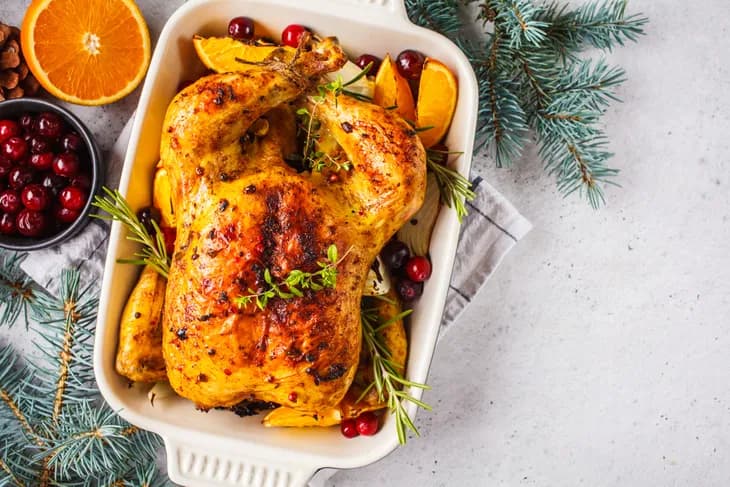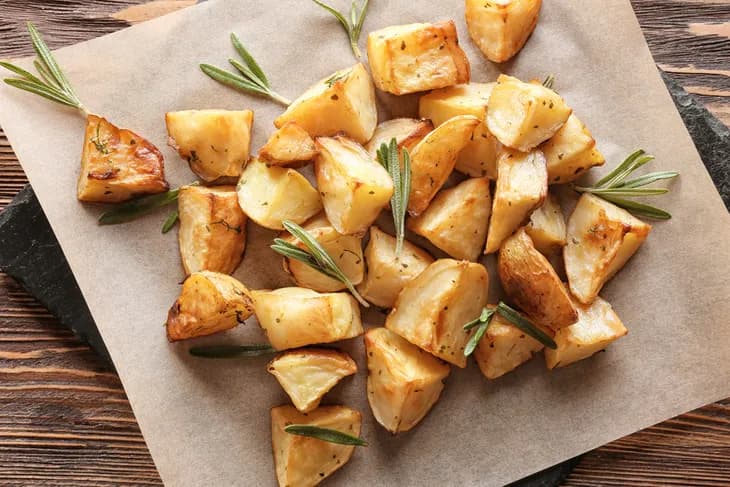Thanksgiving Foods to Eat and Avoid With Diabetes

Thanksgiving dinner tables are often filled with lavish casseroles, delicious sides, and sweet pies, which can be a challenge to navigate if you have diabetes.
Luckily, you can still enjoy the guilty pleasures but it takes a bit of extra planning.
Here are a few tips plus a list of foods to eat and avoid to help you enjoy a healthy and happy Thanksgiving holiday.
Holidays like Thanksgiving can be fun and exciting and an opportunity to reconnect with family. Though the holiday is about giving thanks, food is also a central focus. Lavish casseroles with marshmallow tops, sugary beverages, and sweet pies often fill the tables, which can be a nightmare to navigate for anyone living with diabetes. But it doesn’t have to be.
Individuals with diabetes can still enjoy all the guilty pleasures of Thanksgiving dinner but it takes a bit of extra planning. Follow along as we take a look at a few simple tips to help you navigate a Thanksgiving meal plus a list of foods to eat and avoid.
Tip: Start the Day With a Healthy Breakfast
Make sure you don’t skip breakfast or lunch, especially on Thanksgiving day! Eating a healthy breakfast is a great way to avoid temptation because you won’t be showing up to Thanksgiving dinner feeling too hungry. It can also help prevent overeating too.
According to Orlando Health, a healthy start to the day should include protein, whole grains, and fresh fruit. The source also says to make sure you get plenty of fiber to help manage blood sugar levels and hunger. If you’re feeling hungry before dinner, reach for fruits and vegetables to snack on. Protein-rich foods like cheese, nuts, or meat are also great snacks to consider. Also, if you’re feeling hungry, the source says maybe try drinking water first as some people confuse thirst with hunger.

Eat: Turkey
Turkey is often the main course of Thanksgiving dinner and you’ll be happy to know this is a great option for people with diabetes. Turkey is an excellent source of protein and it’s chock full of essential vitamins and minerals. It’s also low-fat when you opt for white meat with no skin.
According to WebMD, a single 3-ounce serving of roasted turkey (without the skin) is only 145-calories, 25-grams of protein, 4-grams of fat, and 0-grams of sugar. This means eating turkey won’t cause a drastic spike in blood sugar.

Eat: Potatoes (But in Moderation)
Roasted potatoes or mashed potatoes are another must-have Thanksgiving dish but people with diabetes should err on the side of caution with this dish too. Though people with diabetes can eat potatoes, it’s very important to limit portion sizes because of their high carb content, explains Healthline.
The source suggests always eating the skin and opting for low GI varieties. It’s also best to stick to boiling, baking, or steaming cooking methods. You can certainly enjoy your favorite potato dish but remember to plan ahead, find out how many carbs are in your dish, and adjust your portions accordingly.

Avoid: Store-Bought Stuffing
Store-bought stuffing is packed with empty carbs which can cause a blood sugar spike. While it’s best to avoid store-bought varieties, there are many diabetes-friendly stuffing recipes online. So if you love stuffing, make your own dish to share.
Verywell Health says one way you can make stuffing healthier is by substituting most of the butter for fat-free chicken or vegetable broth. Swapping white bread for whole-grain bread can help too. You can also consider adding nutrient-dense additions like chopped vegetables, such as celery, carrots, and onion, as well as nuts and seeds.

Latest Articles

Does Chicken Soup Really Help When You’re Sick? A Nutrition Specialist Explains What’s Behind the Beloved Comfort Food
Preparing a bowl of chicken soup for a loved one when they’re sick has been a common practice...

Aerobic and Strength Training Exercise Combined Can Be an Elixir for Better Brain Health in Your 80s and 90s, New Study Finds
People in the oldest stage of life who regularly engage in aerobic activities and strength training exercise...

How to Overcome Repetitive Negative Thinking Through Meditation
Do you ever find yourself caught in a cycle of negative thoughts? Maybe you ruminate on past mistakes, worry excessively about the...

Can Coffee or a Nap Make Up for Sleep Deprivation? A Psychologist Explains Why There’s No Substitute For Shut-Eye
There is no denying the importance of sleep. Everyone feels better after a good night of sleep, and lack of sleep can have profoundly negative...